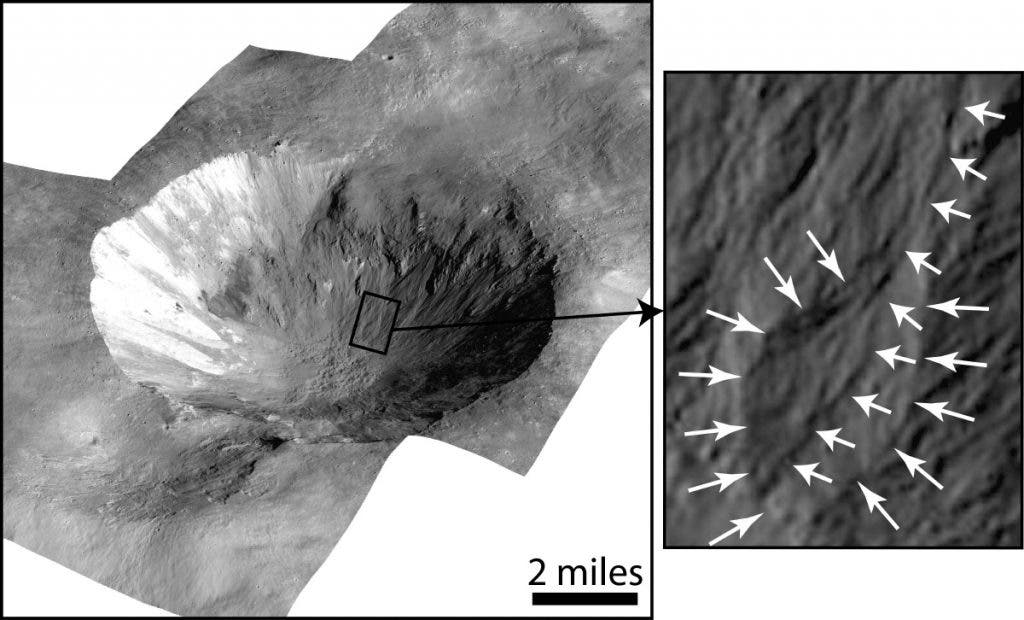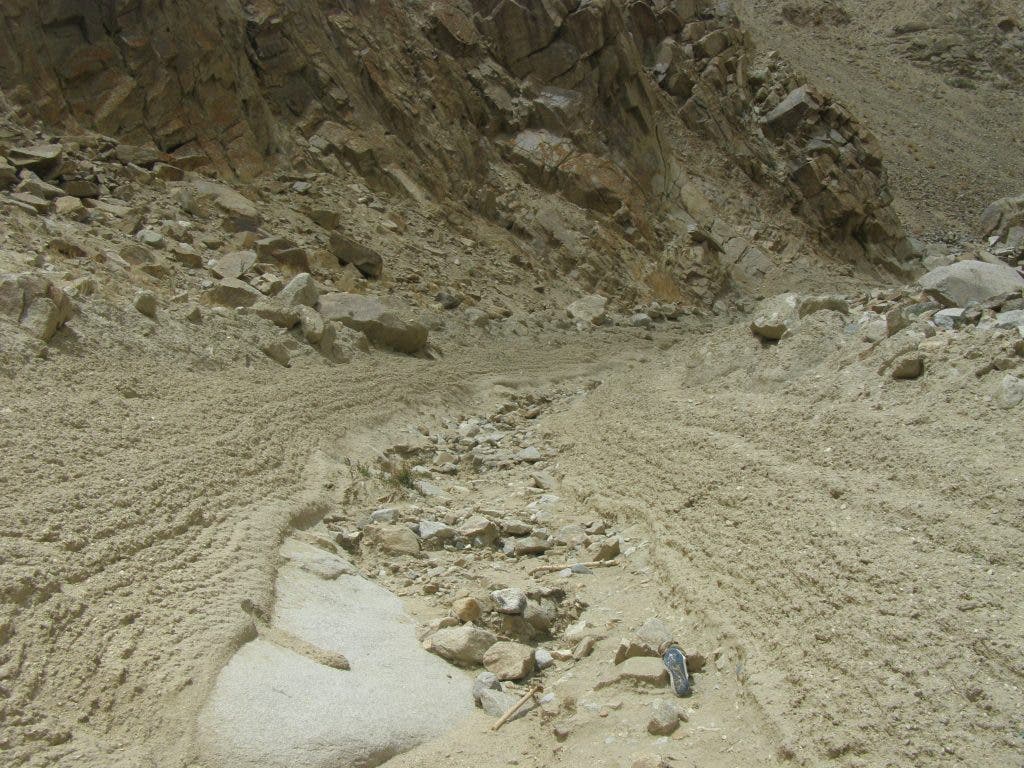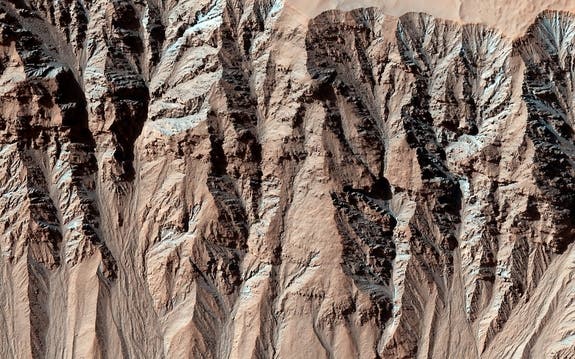According to a new study, water once flowed on the surface of Vesta, the third-largest asteroid in the solar system. This took astronomers by surprise, as even if water does form on asteroids, it tends to evaporate very quickly.
“Nobody expected to find evidence of water on Vesta. The surface is very cold and there is no atmosphere, so any water on the surface evaporates,” study lead author Jennifer Scully, a postgraduate researcher at UCLA, said in a NASA statement. “However, Vesta is proving to be a very interesting and complex planetary body.”

Credit: NASA/JPL-Caltech/UCLA/MPS/DLR/IDA
With a mean diameter of 525 kilometres (326 mi), Vesta comprises an estimated 9% of the mass of the asteroid belt. It is the second heaviest body in the belt between Mars and Jupiter after the dwarf planet Ceres. The less-massive Pallas is slightly larger, making Vesta third in volume.
Scully and her team analyzed images of Vesta taken by the Dawn spacecraft during the period it orbited the asteroid – from July 2011 to September 2012. They observed curved gullies and fan-shaped deposits within eight different Vesta impact craters. These channels are very similar to channels carved by “debris flows” here on Earth, which are caused by water moving around dirts and rock. Debris flows are geological phenomena in which water flows down, also moving masses of soil and fragmented rock down mountainsides. They then funnel into stream channels, entrain objects in their paths, and form thick, characteristic muddy deposits on valley floors.

Those craters are much younger than the asteroid itself; while Vesta’s age is estimated at 4.56 billion years, the craters are less than 100 million years old. The thing is, we don’t know for sure that water carved thos gullies and deposits, but there’s almost nothing else that could have, so it seems quite likely that Vesta once had flowing water in the past 100 million years.
“They form kind of complex networks, similar to what we see in [Arizona’s] Meteor Crater,” Scully told Space.com last month at the annual fall meeting of the American Geophysical Union in San Francisco, where she presented the results. (The study is also being published in the journal Earth and Planetary Science Letters.)
It should be kept in mind that when they say “flowing water”, it’s not like a river or a stream, but it’s a debris flow. Smaller quantities of water, moving around mud and rocks. The team proposes that meteorite strikes melted subsurface ice deposits, creating significant quantities of water. This means that Vesta also has significant quantities of ice, something which has been hinted at, but not proven yet.
“If present today, the ice would be buried too deeply to be detected by any of Dawn’s instruments,” Scully said in the NASA statement. “However, the craters with curved gullies are associated with pitted terrain, which has been independently suggested as evidence for loss of volatile gases from Vesta.”

While the water would have eventually evaporated, it would have still had enough time to create the gullies and mud deposits.
The study raises even more interest in the asteroid belt. Vesta, Ceres and Pallas in particular seem to hide important secrets, and it should be also remembered that a study in 2012 claimed that asteroid belts are crucial for the development of life.
“We look forward to uncovering even more insights and mysteries when Dawn studies Ceres,” said Dawn principal investigator Christopher Russell, also of UCLA.


